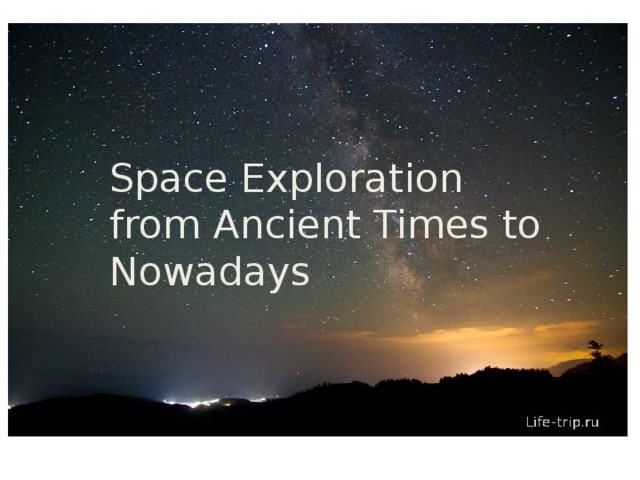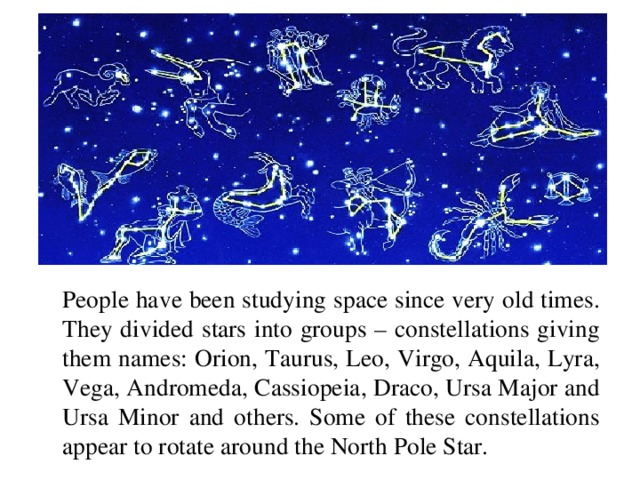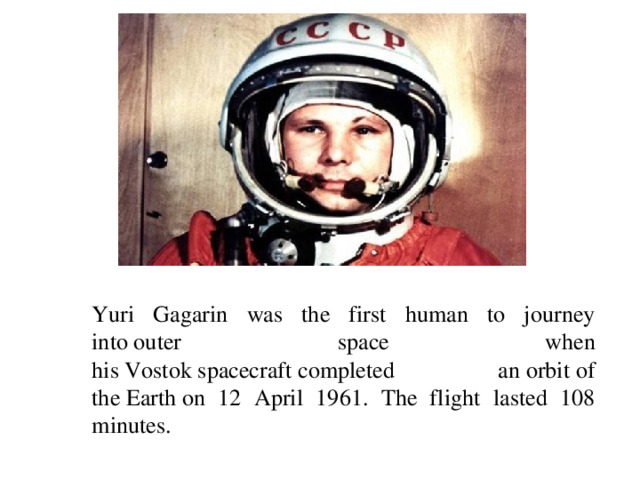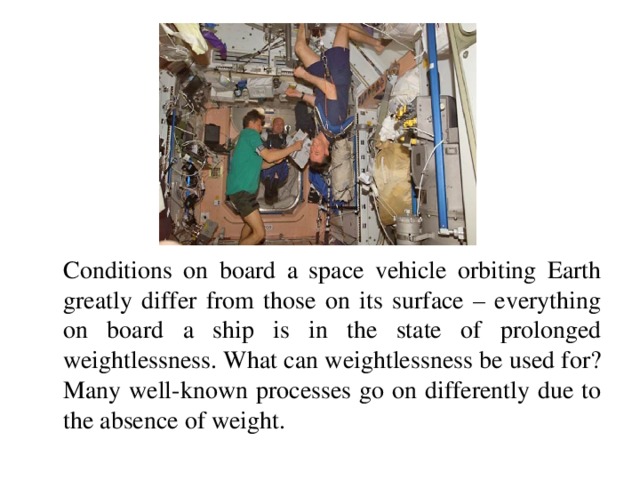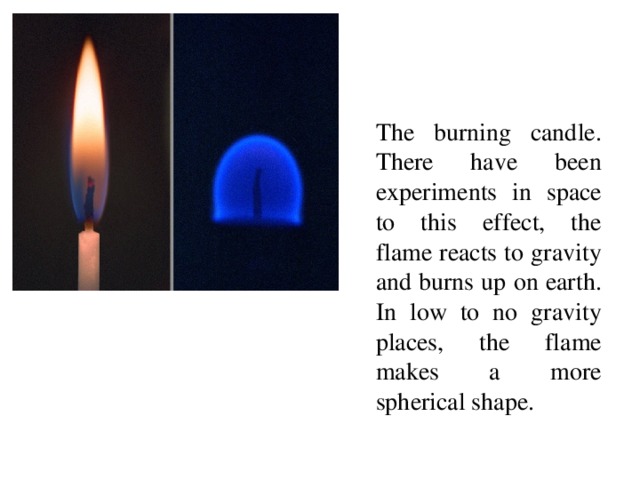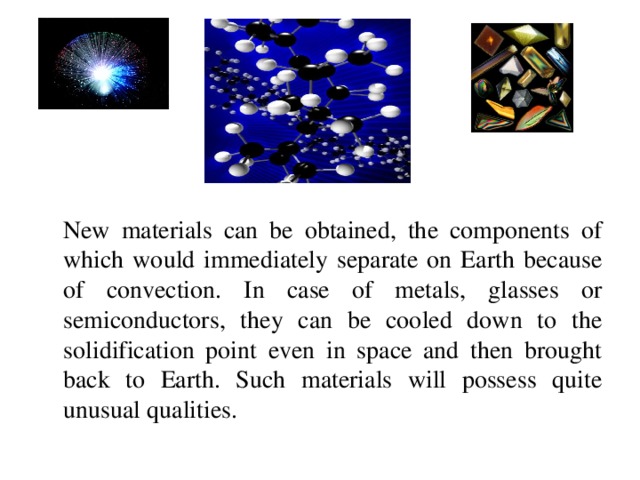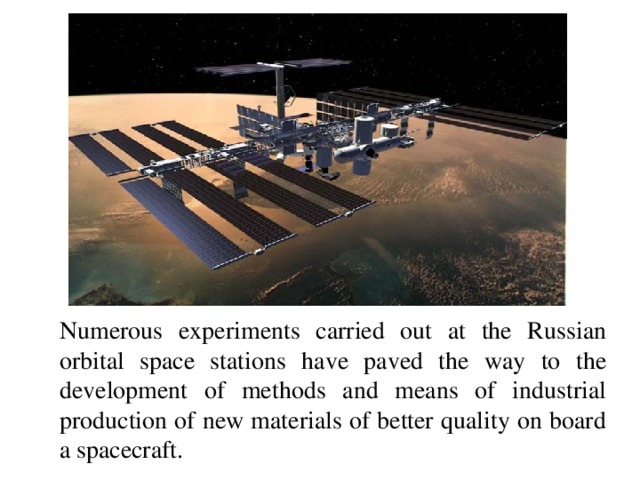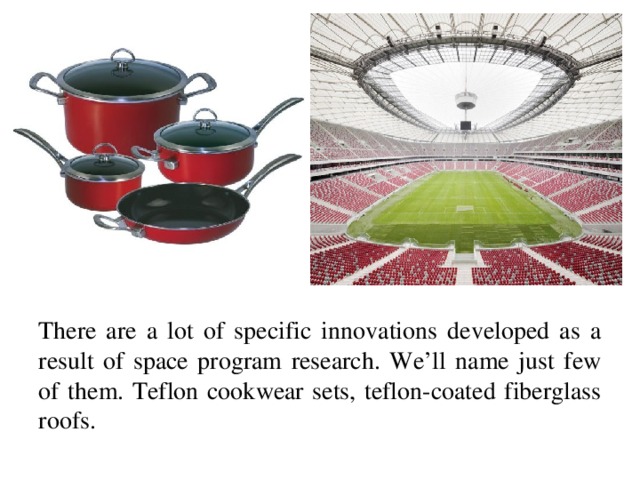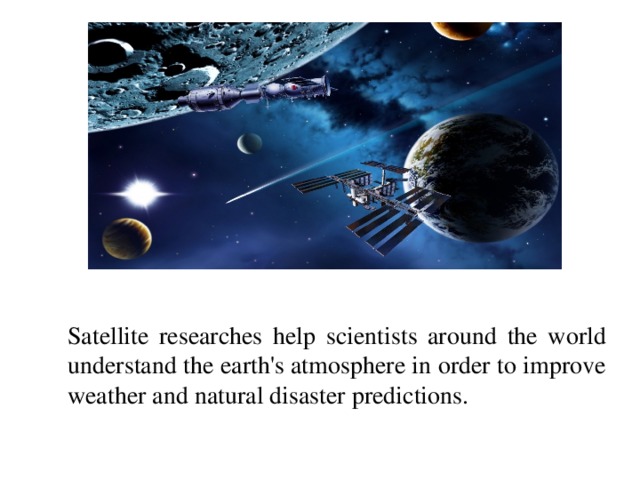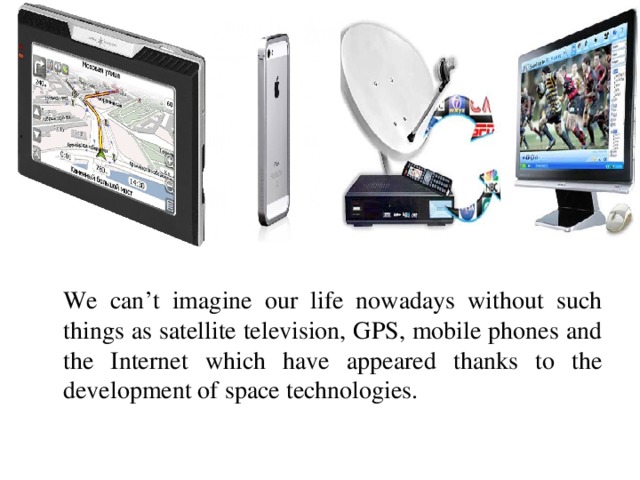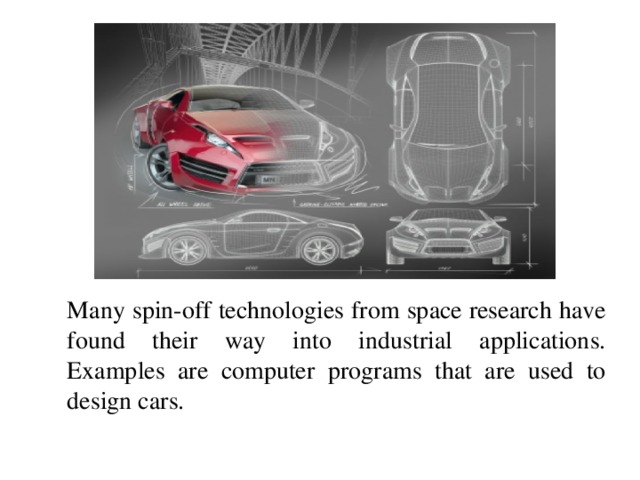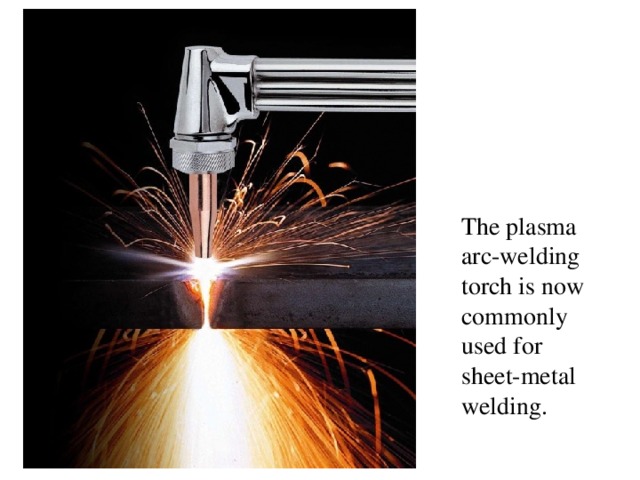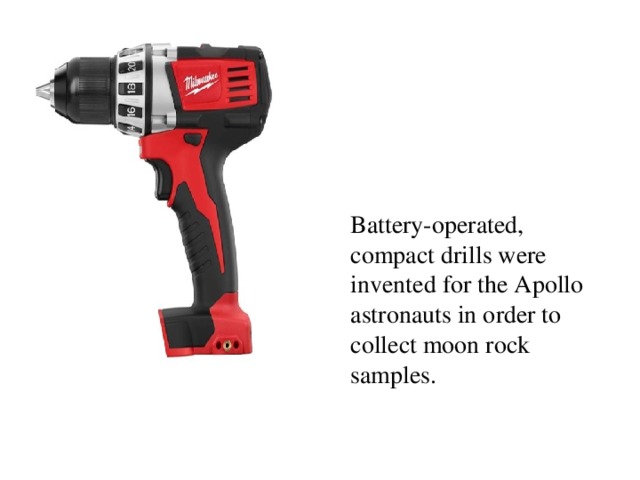В данной презентации рассказывается об исследовании космоса с древнейших времен до наших дней, о первых полетах и о применении космических технологий в повседневной жизни. (Предварительно студенты знакомятся со словами, которые могут быть им незнакомы): Taurus – Телец, Leo - Лев, Virgo - Дева, Aquila - Орел, Ursa Major/Minor - Большая/Малая Медведица, weightlessness - невесомость, moon rock samples - образцы лунного грунта, plasma arc-welding - дуговая плазменная сварка, alloy - сплав, beam - луч, dissolve - растворять, tissue – ткань, surgery - хирургия, semiconductor - полупроводник, possess quite unusual qualities - обладать необычными свойствами, pave the way - проложить путь, fiberglass - стекловолокно, prediction - прогнозирование, application –применение.
Создайте Ваш сайт учителя Видеоуроки Олимпиады Вебинары для учителей
"SPACE EXPLORATION" презентация
Вы уже знаете о суперспособностях современного учителя?
Тратить минимум сил на подготовку и проведение уроков.
Быстро и объективно проверять знания учащихся.
Сделать изучение нового материала максимально понятным.
Избавить себя от подбора заданий и их проверки после уроков.
Наладить дисциплину на своих уроках.
Получить возможность работать творчески.
Просмотр содержимого документа
«"SPACE EXPLORATION" презентация »
Полезное для учителя
Распродажа видеоуроков!
2160 руб.
3080 руб.
1940 руб.
2770 руб.
1880 руб.
2690 руб.
1940 руб.
2770 руб.
ПОЛУЧИТЕ СВИДЕТЕЛЬСТВО МГНОВЕННО
* Свидетельство о публикации выдается БЕСПЛАТНО, СРАЗУ же после добавления Вами Вашей работы на сайт
Удобный поиск материалов для учителей
Проверка свидетельства
